Collection of materials relating to neuro-ophthalmology as part of the Neuro-Ophthalmology Virtual Education Library.
NOVEL: https://novel.utah.edu/
TO
- NOVEL966
Filters: Collection: "ehsl_novel_novel"
| Title | Creator | Description | Subject | ||
|---|---|---|---|---|---|
| 151 |
 |
Central Retinal Artery Occlusion | Natasha Nayak, MD; Rudrani Banik, MD | Power point of case presentation of acute central retinal artery occlusion (CRAO) treated with tPA. Risk factors for stroke and results of EAGLE study reviewed. Imaging: Number of Figures and legend for each: 12 Slide 3: Figure 1: Table 1: Exam Findings Slide 3: Figure 2: Table 2: Exam Findings Cont... | Central Retinal Artery Occlusion; Stroke; Tissue Plasminogen Activator; EAGLE Study |
| 152 |
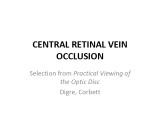 |
Central Retinal Vein Occlusion | Kathleen B. Digre, MD | Slideshow describing condition. | Occlusion |
| 153 |
 |
Central/Branch Retinal Artery Occlusion (PowerPoint) | AAO/NANOS - American Academy of Ophthalmology / North American Neuro-Ophthalmology Society | Occlusion of a branch or central retinal artery may result in acute visual loss. The ophthalmoscopic findings are retinal whitening due to ischemic retina in the distribution of the occluded artery. Sparing or selective involvement of cilioretinal artery branches may occur. Patients with a central r... | Central/Branch Retinal Artery Occlusion |
| 154 |
 |
Cerebellar Anatomy on MRI | Joshua East, MD; Nicholas A. Koontz, MD; Devin D. Mackay, MD | Overview of structural anatomy of the cerebellum and surround structures on MRI images of the brain. | Cerebellar Anatomy; MRI |
| 155 |
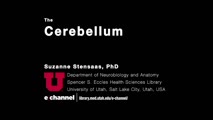 |
Cerebellum: Neuroanatomy Video Lab - Brain Dissections | Suzanne S. Stensaas, PhD | The gross features of the cerebellum are shown. The three peduncles are demonstrated, noting their input and output to and from the cerebellum. Emphasis is given to symptoms of cerebellar disease appearing on the same side of the body. Special emphasis is given to cortical-cerebellar connections, st... | Cerebellum; Cortical-Cerebellar Connection; Brain; Dissection |
| 156 |
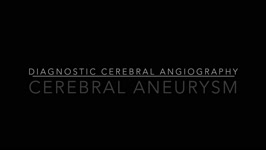 |
Cerebral Aneurysm | Justin Gibson, MD; Charles Prestigiacomo, MD | Cerebral angiogram of a patient with an arteriovenous malformation, or AVM. | Angiogram; Cerebral Aneurysm |
| 157 |
 |
Cerebral Circulation: Neuroanatomy Video Lab - Brain Dissections | Suzanne S. Stensaas, PhD | The major vessels of the anterior and posterior circulation are demonstrated along with the Circle of Willis on both a model and in an animation. The distribution of the three major cerebral arteries is demonstrated along with the concept of a watershed zone. A gross specimen with good vessels is al... | Cerebral Circulation; Brain; Dissections |
| 158 |
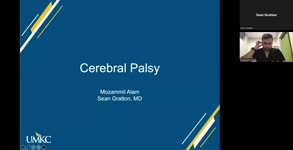 |
Cerebral Palsy | Mozammil Alam, Medical Student; Sean Gratton, MD | This video covers an overview of cerebral palsy. | Cerebral Palsy |
| 159 |
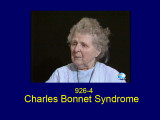 |
Charles Bonnet Syndrome | Shirley H. Wray, MD, PhD, FRCP | Slideshow describing condition. | Charles Bonnet Syndrome; Occipital Lobe; Release Hallucinations; Visual Hallucinations |
| 160 |
 |
Charles Bonnet Syndrome | Shirley H. Wray, MD, PhD, FRCP | The patient is a 79 year old woman with a chief complaint of visual hallucinations. She carries a diagnosis of glaucoma and cataracts. The patient was in good health until two weeks prior to admission when she noted a black cloud in her visual field in the top central area. The cloud gradually chang... | Occipital Lobe; Visual Hallucinations; Release Hallucinations; Charles Bonnet Syndrome |
| 161 |
 |
Chest CT Thymoma (Guest Lecture) | Robert A. Novelline, MD | The patient is a 46 year old woman who presented in July 1977 with horizontal double vision lasting two weeks. Three weeks later the left upper eyelid started to droop and by the end of the day the eye was closed. She had no ptosis of the right eye and no generalized fatigue. She consulted an intern... | Unilateral Ptosis; Unilateral Lid Retraction; Myasthenic Lid Twitch; External Ophthalmoplegia; Ocular Myasthenia Gravis; Tensilon Test; Thymolipoma; Generalized Myasthenia Gravis; Unilateral Myasthenia Gravis; Myasthenic Ptosis; Lid Retraction; Lid Twitch |
| 162 |
 |
Chest CT: Thymoma | Robert A. Novelline, MD | Slideshow describing condition. | External Ophthalmoplegia; Generalized Myasthenia Gravis; Myasthenic Lid Twitch; Ocular Myasthenia Gravis; Tensilon Test; Thymolipoma; Unilateral Lid Retraction; Unilateral Myasthenia Gravis; Unilateral Ptosis |
| 163 |
 |
Chiari I Malformation | Shirley H. Wray, MD, PhD, FRCP | See also: http://content.lib.utah.edu/cdm/ref/collection/ehsl-shw/id/295, http://content.lib.utah.edu/cdm/ref/collection/ehsl-shw/id/323, and http://content.lib.utah.edu/cdm/ref/collection/ehsl-shw/id/61 | Downbeat Nystagmus; Oscillopsia; Chiari-1 Malformation; Primary Position Downbeat Nystagmus; Vertical Saccadic Dysmetria; Horizontal Saccadic Dysmetria; Ataxia; Dysmetria; Chiari Malformation |
| 164 |
 |
Chiari-I Malformation | Shirley H. Wray, MD, PhD, FRCP | A PowerPoint slideshow describing the condition. | Ataxia; Chiari-1 Malformation; Downbeat Nystagmus; Dysmetria; Horizontal Saccadic Dysmetria; Lid Nystagmus; Oscillopsia; Primary Position Downbeat Nystagmus; Vertical Saccadic Dysmetria |
| 165 |
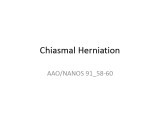 |
Chiasmal Herniation (PowerPoint) | AAO/NANOS - American Academy of Ophthalmology / North American Neuro-Ophthalmology Society | This woman was 61 years old when she underwent initial neuro-ophthalmologic evaluation. Twenty-three years earlier, she had undergone removal of a pituitary adenoma followed by radiation therapy. At that time, she had noted a preoperative visual field defect that improved somewhat after the surgery.... | Chiasmal Herniation |
| 166 |
 |
Chiasmal Neuritis in Multiple Sclerosis | Kathleen B. Digre, MD; James J. Corbett, MD | Slideshow describing condition. | Multiple Sclerosis |
| 167 |
 |
Childhood Migraine | Shirley H. Wray, MD, PhD, FRCP | Slideshow describing condition. | Alice in Wonderland Syndrome; Macropsia - Hemi-macropsia; Metamorphopsia; Migraine Visual Aura without Headache; Occipital Lobe; Visual Phenomena |
| 168 |
 |
Chorioretinal Coloboma | Kirstyn Taylor; Drew Scoles, MD | Coloboma is a term used to describe defects seen in various ocular structures due to incomplete embryologic development. Fundus coloboma specifically is due to failure of the embryonal fissure to close, which typically occurs by 5-7 weeks gestation. Posterior colobomas, involving the retina, choroid... | Chorioretinal; Coloboma; Optic Nerve |
| 169 |
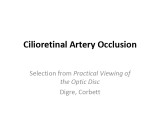 |
Cilioretinal Artery Occlusion | Kathleen B. Digre, MD; James J. Corbett, MD | Slideshow describing cilioretinal artery occlusion. | Occlusion; Artery Occlusion |
| 170 |
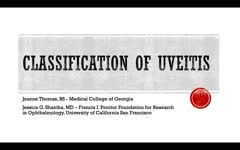 |
Classification of Uveitis | Joanne Thomas, BS; Jessica Shantha, MD | This is an overview of the classification of uveitis. Topics discussed include: SUN anatomic classification, characterization of uveitis descriptors, AC cell and AC flare classification, and terminology of activity. | Uveitis; Classification; SUN |
| 171 |
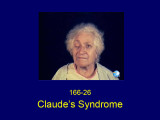 |
Claude's Syndrome | Shirley H. Wray, MD, PhD, FRCP | Slideshow describing condition. | Claude's Syndrome; Contralateral Limb Ataxia; Fascicular Third Nerve Palsy; Fixed Dilated Pupil; Midbrain Infarct; Oculomotor Nerve; Ptosis; Unilateral Third Nerve Palsy |
| 172 |
 |
Claude's Syndrome | Shirley H. Wray, MD, PhD, FRCP | The patient is a 76 year old woman who woke one morning unable to see out of her right eye because of ptosis. She came to the Massachusetts General Hospital emergency room and was admitted. Neurological Examination: Right third nerve palsy involving the pupil Ataxia of the left hand on finger-nose t... | Ptosis; Fascicular Third Nerve Palsy; Fixed Dilated Pupil; Contralateral Limb Ataxia; Claude Syndrome; Midbrain Infarct; Oculomotor Nerve; Unilateral Third Nerve Palsy; Subnuclear; Fascicular Oculomotor (Third) Nerve Palsy |
| 173 |
 |
Clinical Characteristics of Ocular Lateropulsion | Jorge C Kattah, MD | A discussion of the normal mechanism that maintain the eyes in normal horizontal position. | Ocular Lateropulsion; Unilateral Gaze Palsy; Radiographic h-CGD |
| 174 |
 |
Clinical Visual Electrophysiology | Gregory P. Van Stavern, MD; Byron Lam, MD | A description of the use of electrophysiology to examine the visual system. | Electrophysiology; Visual Exam |
| 175 |
 |
Clival Menigioma Causing 6th Nerve Palsy | Bashaer Aldhahwani, MD; Mariam S. Vilá-Delgado, MD | 65 year- old Male patient presented with progressive binocular, horizontal diplopia with limitation of abduction in the right eye. He was diagnosed with Isolated compressive right 6th CN palsy due to right Clival Meningioma. | Clival Meningioma; Sixth Nerve Palsy |
